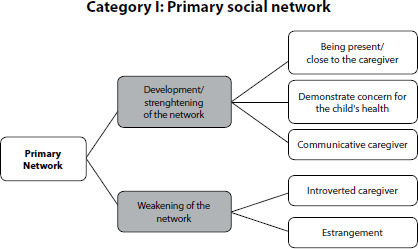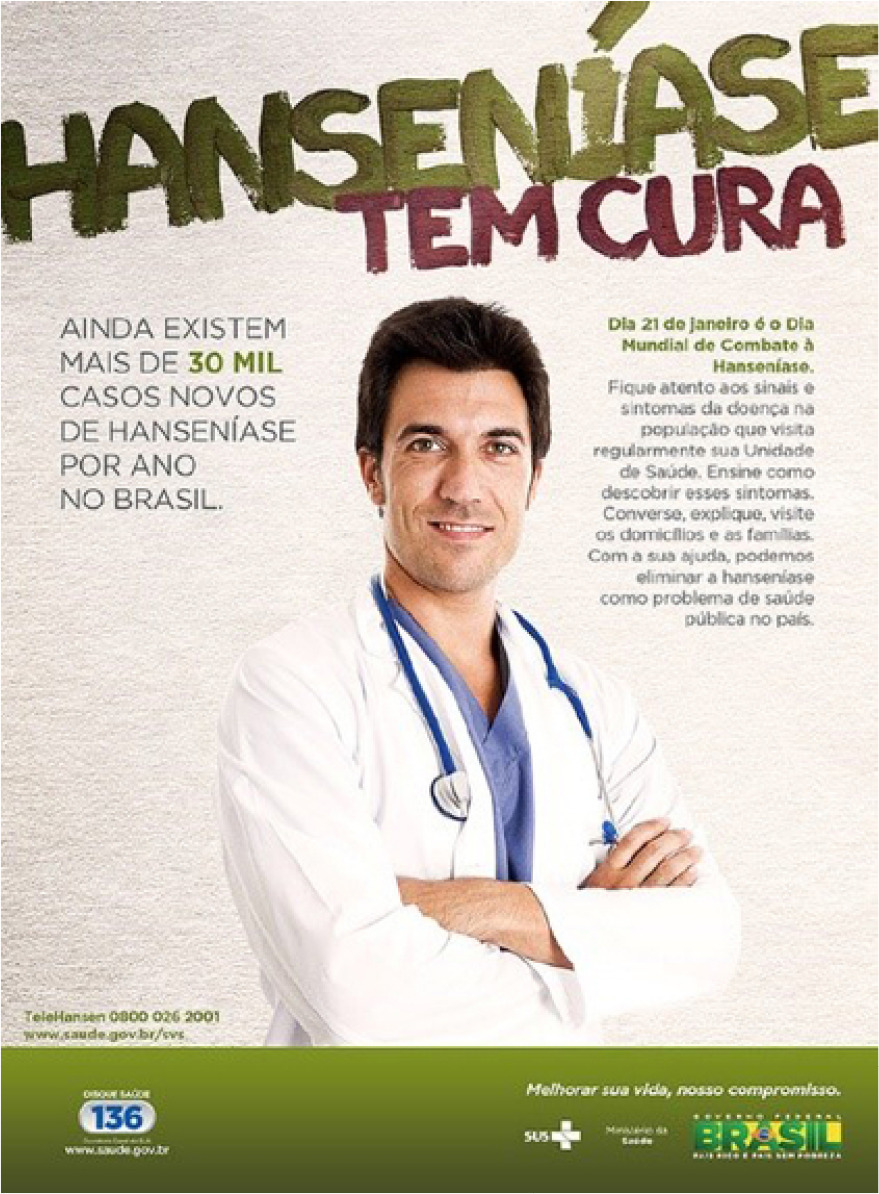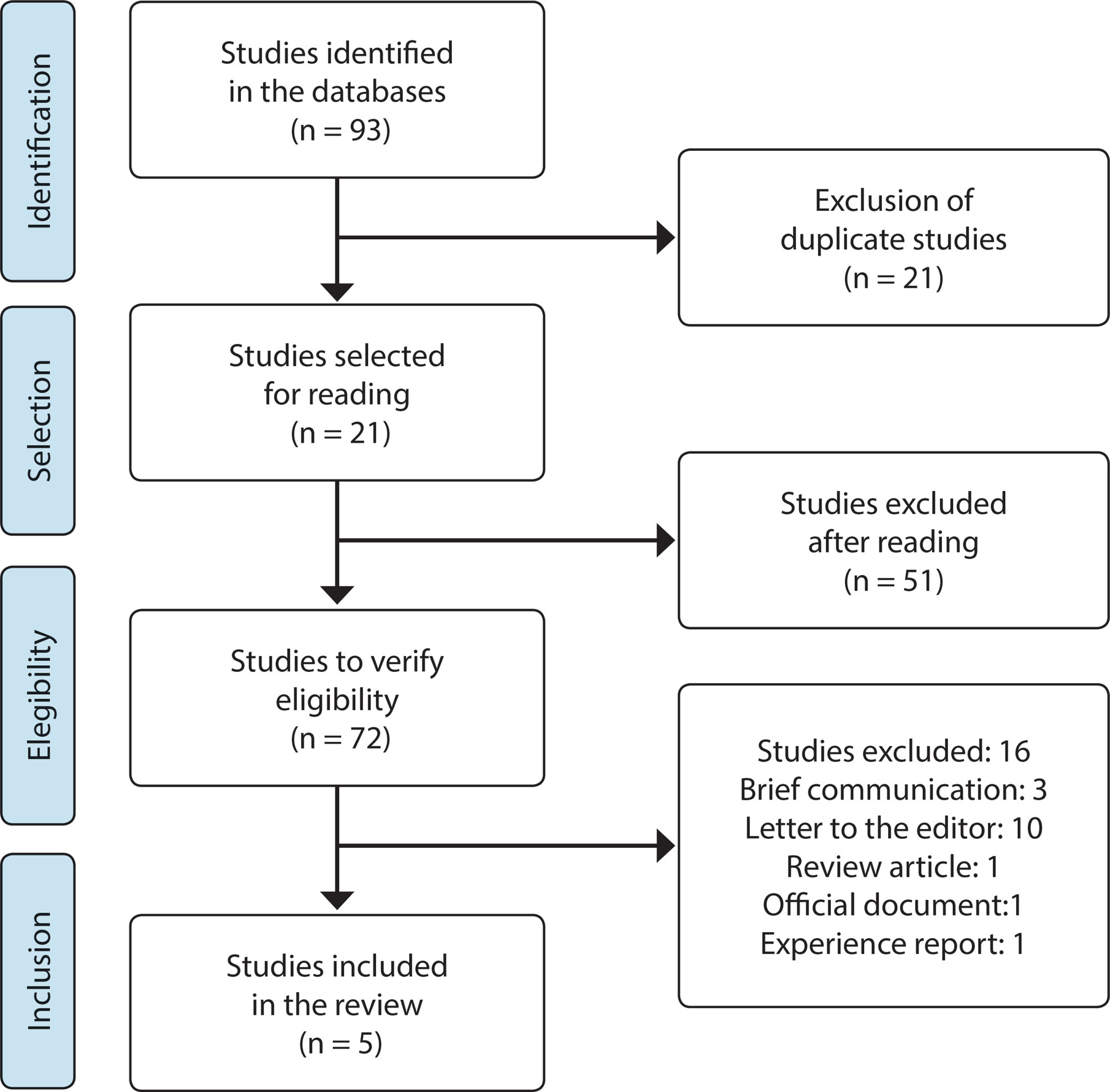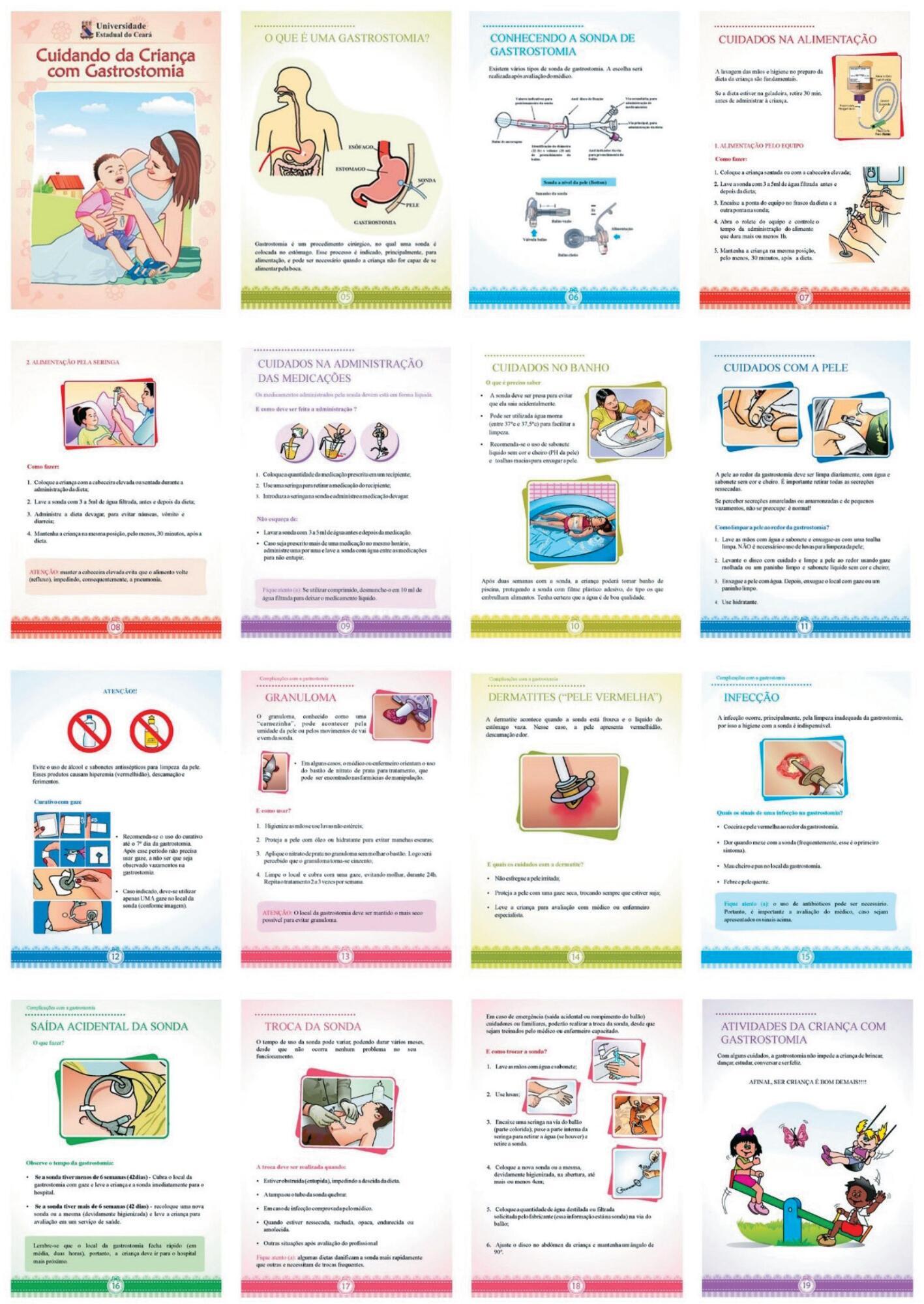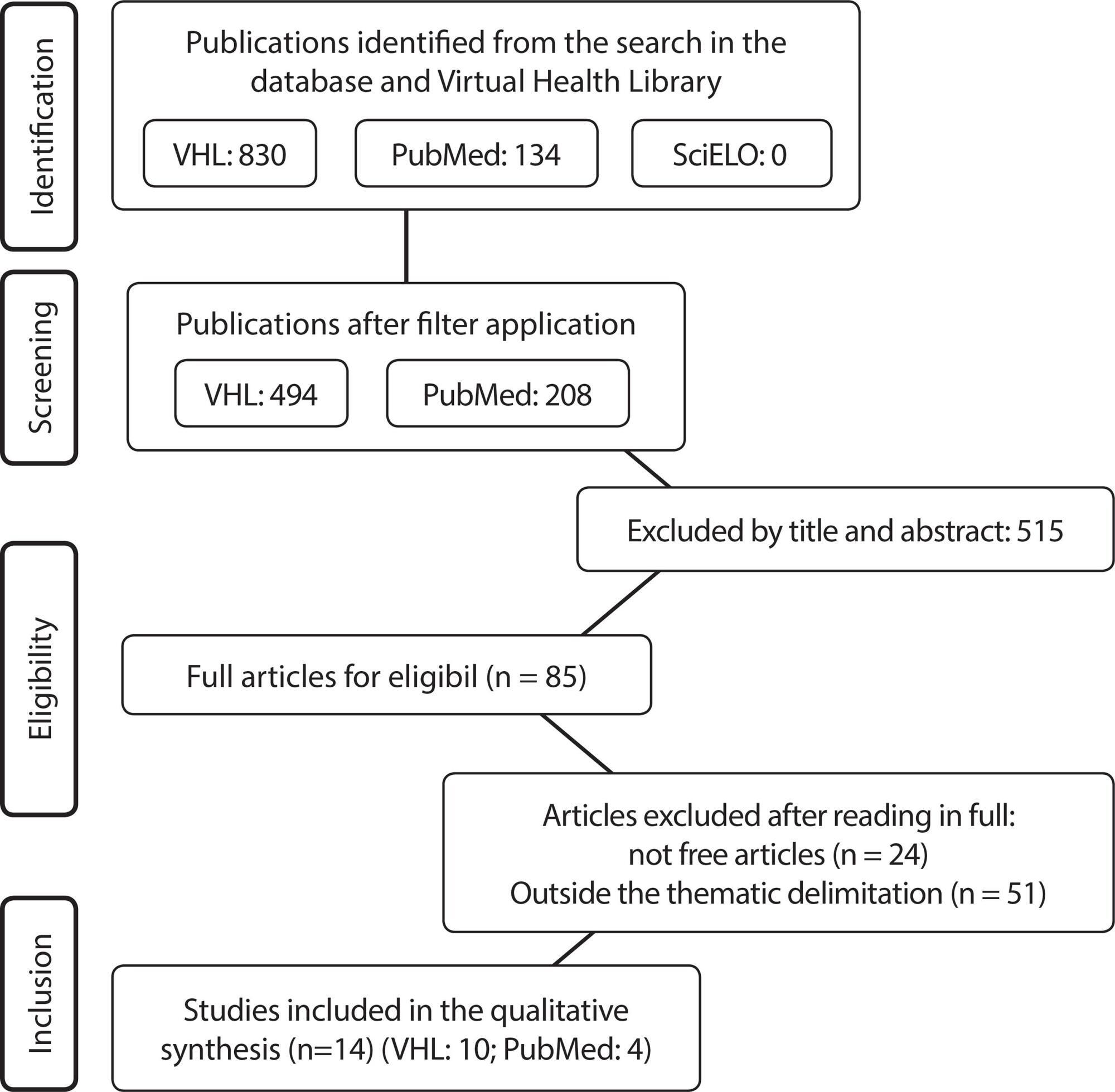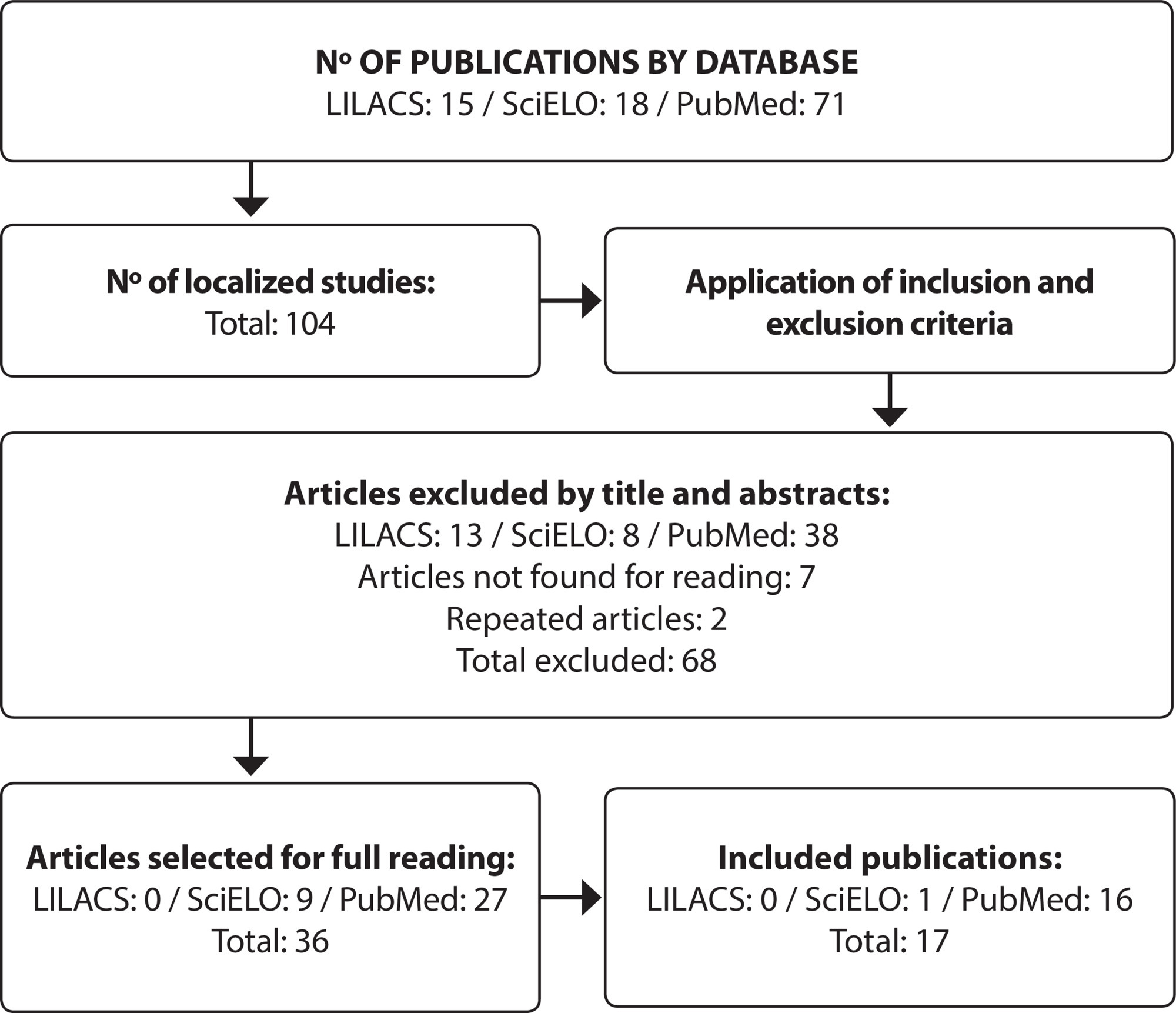-
REVIEW01-01-2018
Institutional violence during the parturition process in Brazil: integrative review
Revista Brasileira de Enfermagem. 2018;71(3):1152-1161
Abstract
REVIEWInstitutional violence during the parturition process in Brazil: integrative review
Revista Brasileira de Enfermagem. 2018;71(3):1152-1161
DOI 10.1590/0034-7167-2017-0238
Views0See moreABSTRACT
Objective:
To identify the types of institutional violence of childbirth reported by the woman, the birth companion and health professionals.
Method:
Integrative review that analyzed 33 articles in the LILACS, BDENF, INDEXPSI, regional SciELO, Scopus, Web Of Science and PubMed databases.
Results:
Women were the main violence rapporteur, with predominance of the psychological type. Precarious infrastructure and the imposition of professional decisions were identified by the companion as violence. For health professionals, performing procedures without consent does not characterize violence, but guarantees childbirth security.
Final considerations:
The most common types of violence in Brazilian maternity hospitals are psychological, physical and structural. Most of the time, violence is reported by women, although professionals also perceive and admit its perpetuation.
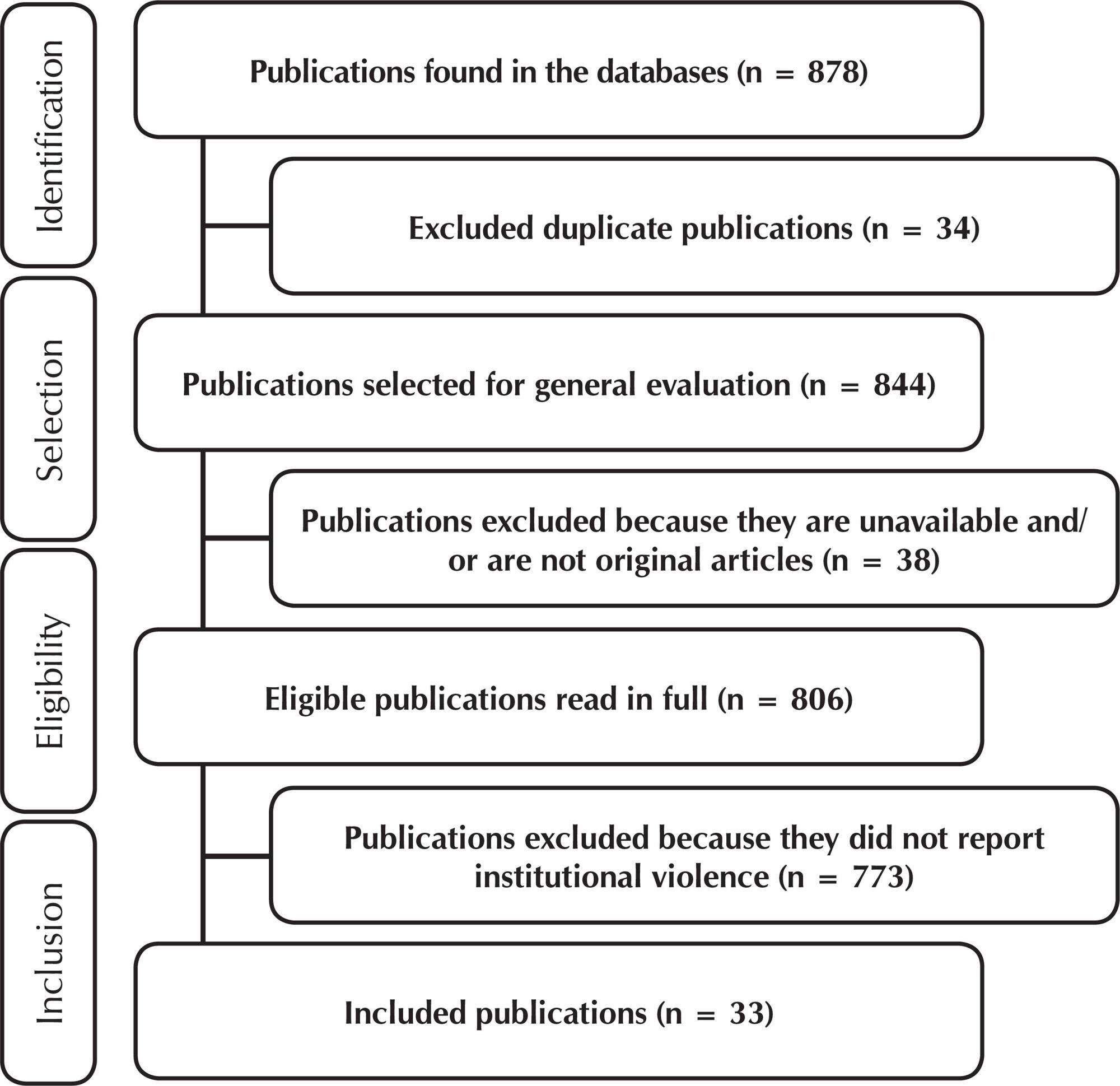
-
RESEARCH01-01-2018
Education practices: research-action with nurses of Family Health Strategy
Revista Brasileira de Enfermagem. 2018;71(3):1144-1151
Abstract
RESEARCHEducation practices: research-action with nurses of Family Health Strategy
Revista Brasileira de Enfermagem. 2018;71(3):1144-1151
DOI 10.1590/0034-7167-2017-0284
Views0See moreABSTRACT
Objective:
to identify the factors that determine the implementation of educational practices of health promotion and to construct proposals to implement the educational actions of the nurses of the Family Health Units (FHU).
Method:
research-action in which individual interviews and focus group were conducted, with 17 nurses from 12 FHU in the city of Cruzeiro do Sul, Acre state, Brazil. The results were organized by the thematic analysis method.
Results:
the thematic units emerged from the analysis: dichotomy between knowledge and doing in the production of care and health; the nurse’s qualification for educational practices; and conditions favorable to health education practices.
Conclusion:
the thematic analysis showed that the educational practice is hampered by the high demand for care in the unit, lack of physical structure and professional qualification for health education. In the action phase, nurses and local managers agreed on actions to improve the quality of educational practices.
-
RESEARCH01-01-2018
Qualification of the family caregiver to the application of the Educational Technology in Health
Revista Brasileira de Enfermagem. 2018;71(3):1135-1143
Abstract
RESEARCHQualification of the family caregiver to the application of the Educational Technology in Health
Revista Brasileira de Enfermagem. 2018;71(3):1135-1143
DOI 10.1590/0034-7167-2017-0163
Views0See moreABSTRACT
Objective:
To evaluate the changes in the participation of the family caregiver in the treatment of the hypertensive person with the application of the Educational Technology in Health (ETH).
Method:
Participant research carried out in a Primary Health Care Unit with 11 family caregivers (FC). The ETH was elaborated based on health education and applied in ten meetings between June and August 2016. We organized the results into categories.
Results:
FCs experienced learning experiences through the exchange of information, socialization of experiences, and linkage establishments. The FCs were encouraged to share their doubts and experiences, so that, supported by listening to the professional, they felt welcomed and determined to fulfill their role with hypertensive relatives.
Final considerations:
The changes that have taken place have been highlighted in the learning of FCs and their commitment to family and self-care, as well as to the conviction that the family environment is indicated to make these changes effective.
-
RESEARCH01-01-2018
Discursive archaeology: constituting knowledge of militant nurses in trade associations
Revista Brasileira de Enfermagem. 2018;71(3):1128-1134
Abstract
RESEARCHDiscursive archaeology: constituting knowledge of militant nurses in trade associations
Revista Brasileira de Enfermagem. 2018;71(3):1128-1134
DOI 10.1590/0034-7167-2017-0277
Views0See moreABSTRACT
Objective:
To analyze the constituting knowledge of militant nurses in trade associations.
Method:
Historical research, based on the oral history method, with a qualitative approach carried out with 11 nurses who are/were militants for professional issues since the 1980s in the state of Bahia. The data collected through semi-structured interviews were organized in the software n-vivo 10 and analyzed based on dialectical hermeneutics.
Results:
We identified pedagogical, administrative, public health, sociological, and trade union background knowledge as constituent of militant individuals.
Final considerations:
The constituting knowledge of militant nurses are inscribed in the Social Sciences, distanced from biomedical knowledge and power, pointing at ways for structuring nursing curricula. We identified the Brazilian Association of Nursing as a space for political formation.
-
RESEARCH01-01-2018
Coordination of health care with the community in the clinical management of tuberculosis
Revista Brasileira de Enfermagem. 2018;71(3):1122-1127
Abstract
RESEARCHCoordination of health care with the community in the clinical management of tuberculosis
Revista Brasileira de Enfermagem. 2018;71(3):1122-1127
DOI 10.1590/0034-7167-2017-0255
Views0See moreABSTRACT
Objective:
determine the coordination of Primary Health Care with community resources in the clinical management of tuberculosis.
Method:
descriptive study, of quantitative approach, with participation of one hundred health professionals. Part of a questionnaire was used in evaluating local institutional capacity for the model of chronic conditions care, adapted for tuberculosis care.
Results:
the coordination between health units, individuals with tuberculosis, and community organizations; the partnerships between institutions and local health councils/committees showed limited capacity. On the other hand, the component for the participation of the Community Health Agent presented more favorable capacity.
Conclusion:
the municipality has unfavorable capacity for coordination of health units and the community. It is reinforced the need to promote these coordinations in search of symptomatic cases in the communities, in the directly observed treatment, and in promoting the association between different social actors.
-
RESEARCH01-01-2018
Central venous catheter for hemodialysis: incidence of infection and risk factors
Revista Brasileira de Enfermagem. 2018;71(3):1115-1121
Abstract
RESEARCHCentral venous catheter for hemodialysis: incidence of infection and risk factors
Revista Brasileira de Enfermagem. 2018;71(3):1115-1121
DOI 10.1590/0034-7167-2017-0047
Views0See moreABSTRACT
Objective:
To measure the incidence of infection in short-term central venous catheter for hemodialysis and to identify the associated risk factors.
Method:
Prospective cohort study conducted in a teaching hospital from September 2015 to April 2016. Patients requiring central venous catheter for hemodialysis were included and data was collected through direct and systematic observation of the catheter insertion procedure by the researchers.
Results:
The final sample consisted of 69 patients, who used 88 catheters. The incidence of infection was 9.1%, and the risk factors were length of hospital stay and insertion of the catheter in the left femoral vein.
Conclusion:
The observation of the actions performed during the insertion of the catheter made it possible to identify the risk factors associated with infection, and the research protocol may have contributed to the reduction of infection rates.
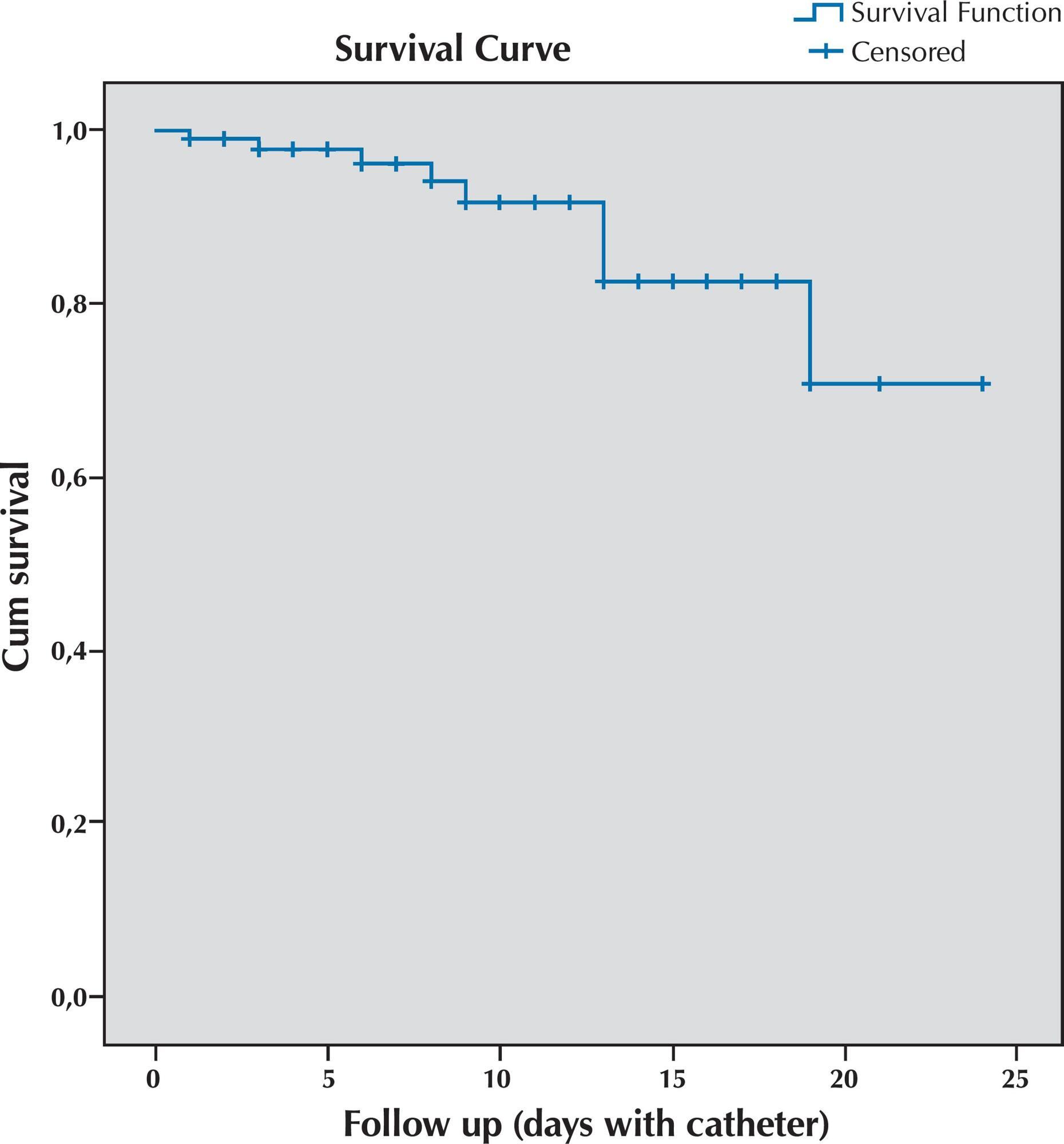
-
RESEARCH01-01-2018
Validation of a care protocol for the septic patient in the Intensive Care Unit
Revista Brasileira de Enfermagem. 2018;71(3):1106-1114
Abstract
RESEARCHValidation of a care protocol for the septic patient in the Intensive Care Unit
Revista Brasileira de Enfermagem. 2018;71(3):1106-1114
DOI 10.1590/0034-7167-2017-0312
Views0See moreABSTRACT
Objective:
to elaborate and validate a protocol for the care of the nurse to the septic patient in Intensive Care Units (ICUs).
Method:
instrument validation study. Two steps were followed: instrument development and content validation according to the Delphi technique.
Results:
the validation of contents related to the nurse’s assistance to the septic patient in intensive care was initially composed of eighteen items analyzed by the evaluators/judges. From this, through the Content Validity Index (CVI), thirteen items with strong evidence of validation were identified, CVI = 0.79. Then the instrument was refined, being then composed of fifteen items, which in the second phase Delphi had a percentage of agreement above 84% for the variables pertinent to the protocol.
Conclusion:
the method was effective to validate the contents of a protocol for the nurse’s assistance to the septic patient in the ICU.
-
RESEARCH01-01-2018
Assessment of the care process with orthotics, prosthetics and special materials
Revista Brasileira de Enfermagem. 2018;71(3):1099-1105
Abstract
RESEARCHAssessment of the care process with orthotics, prosthetics and special materials
Revista Brasileira de Enfermagem. 2018;71(3):1099-1105
DOI 10.1590/0034-7167-2017-0031
Views0See moreABSTRACT
Objective:
to assess potential failures in the care process with orthotics, prosthetics and special materials in a high-complexity hospital.
Method:
an intervention study conducted from March to October 2013. This process was assessed with the Failure Mode and Effects Analysis (FMEA) service tool. The data were analysed according to the risk and the corrective measures were defined.
Results:
no failure was classified as high risk and the corrective measures indicated as low and moderate risk had the following improvement initiatives suggested: standardize the material records in the information system; create a specific form to require materials; hire specialized technical personnel and create a continuous education program.
Conclusion:
all the suggested initiatives were implemented and helped to reduce the assistance risks for patients due to failures in this process. The actions increase safety levels and provide higher quality of service.
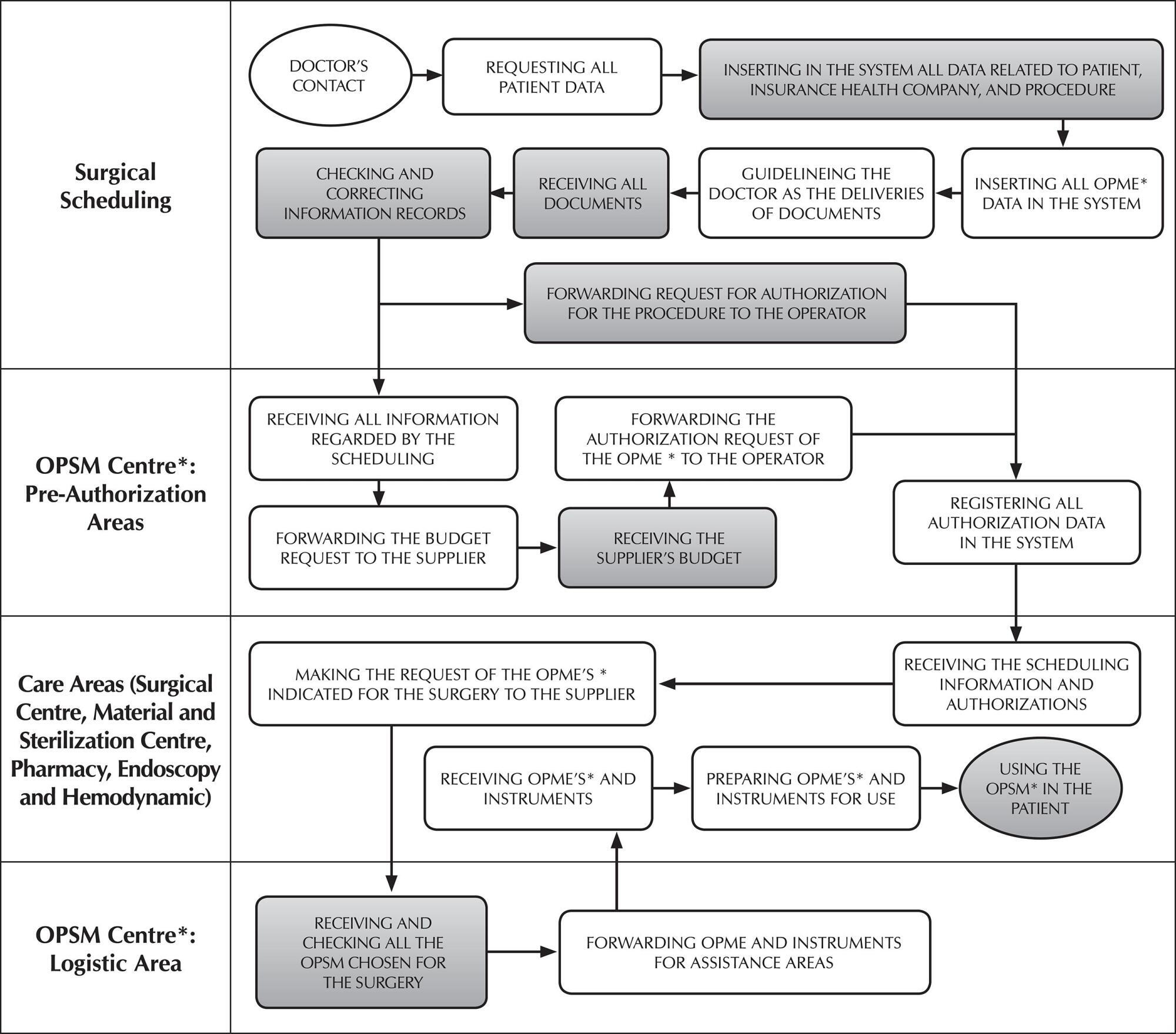
Search
Search in:
Nuvem de Tags
Enfermagem (930)Cuidados de Enfermagem (269)Atenção Primária à Saúde (239)Idoso (208)Educação em Enfermagem (151)Segurança do Paciente (150)Saúde Mental (145)Educação em Saúde (139)Estudos de Validação (131)Qualidade de Vida (104)Tecnologia Educacional (100)Promoção da Saúde (99)COVID-19 (91)Criança (91)Família (87)Enfermagem Pediátrica (86)Saúde do Trabalhador (86)Adolescente (85)Saúde Pública (82)Estudantes de Enfermagem (77)






